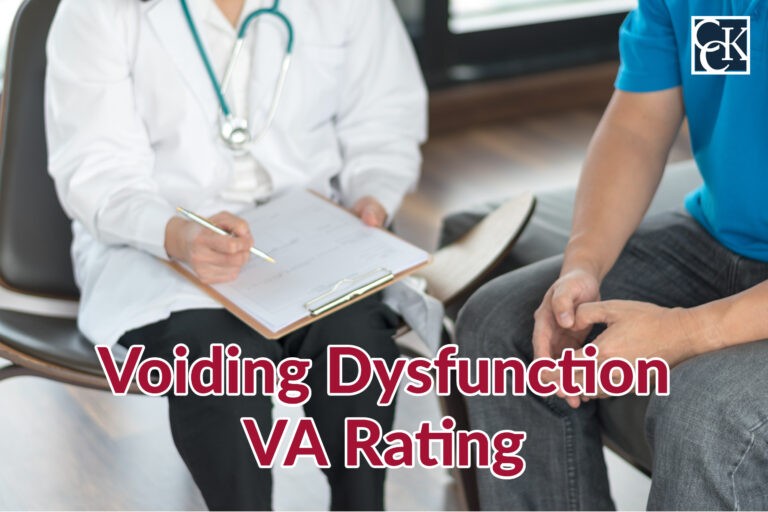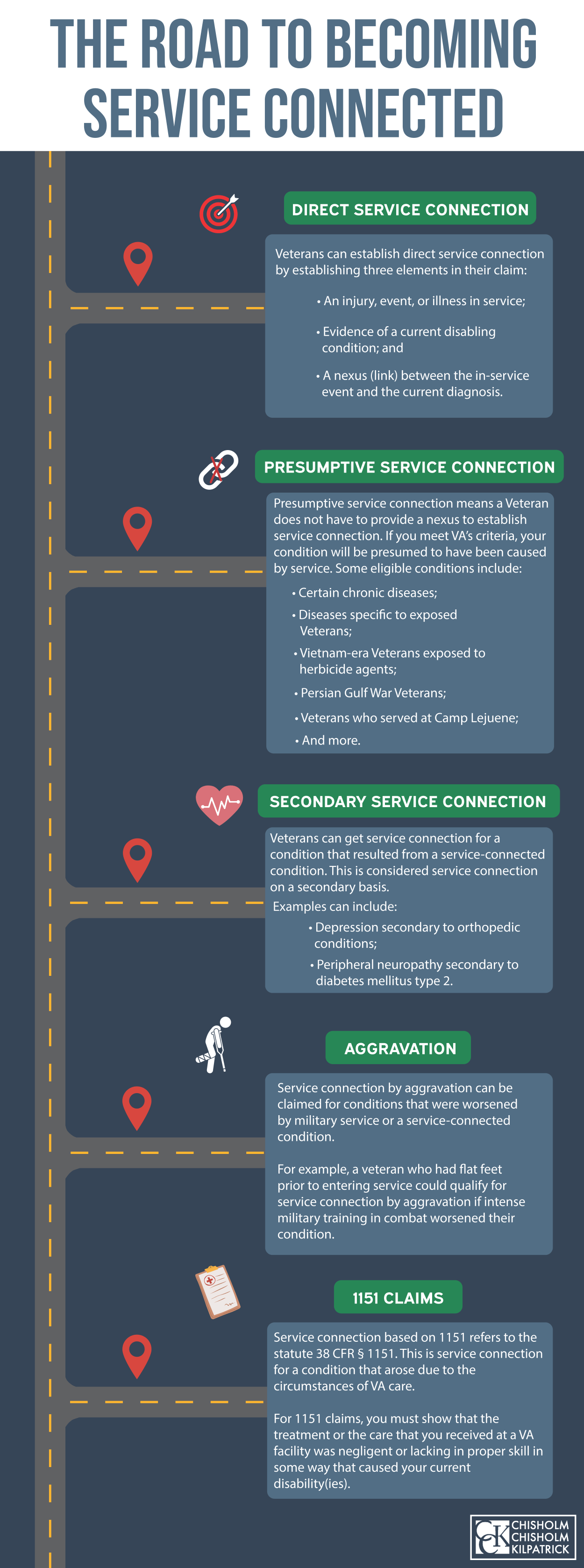Voiding Dysfunction VA Rating

CCK Law: Our Vital Role in Veterans Law
What Is Voiding Dysfunction?
Voiding dysfunction is a broad term for conditions in which the bladder and urethra (i.e., tube that allows urine to pass out of the body) do not effectively coordinate urination habits.
Essentially, it occurs when there are abnormalities in the filling (i.e., storage) and/or emptying (i.e., voiding) of urine. It is often described by symptoms of frequency (urinating more than eight times per day), urgency (the sudden, strong need to urinate), and urine retention (unable to empty the bladder).
Common Symptoms
Symptoms of bladder and urethra conditions are usually classified as Lower Urinary Tract Symptoms (LUTS). Generally, LUTS symptoms include:
- Frequent urination
- Frequent nighttime urination
- Urgency
- Involuntary loss of urine
- Slow or weak urine stream
- Dribbling urine
Causes
This condition is typically caused by issues such as overactive pelvic floor muscles. It may also be the result of nerve problems affecting how the bladder muscles contract or blockages within the urethra. Other possible causes and risk factors include bladder stones, cancerous or non-cancerous tumors, urinary incontinence, or interstitial cystitis (more common in women).
In men, voiding dysfunction may also be caused by an enlarged prostate due to benign prostatic hyperplasia or prostatitis.
Diagnosis and Treatment
To diagnose voiding dysfunction, a doctor may complete a physical examination, collect a urine sample, or use a bladder ultrasound. A urologist may also perform a test with a uroflowmeter to observe urination patterns.
A doctor may recommend pelvic floor therapy to treat voiding dysfunction and strengthen the bladder. Other treatments include medications, muscle relaxants, a form of electrical stimulation called neuromodulation, or intermittent self-catheterization (ISC). In some cases, minimally invasive surgery is needed.

How to Prove a VA Claim for Voiding Dysfunction
To receive Department of Veterans Affairs (VA) disability compensation for voiding dysfunction, veterans must first establish service connection. For many conditions, direct service connection is typically the most common way to pursue VA compensation; however, for voiding dysfunction, establishing secondary service connection may be more useful.
A secondary service-connected condition is a condition that stems from a separate service-connected disability. For example, say a veteran is service connected for prostate cancer and, as a result, develops symptoms of voiding dysfunction. Here, the veteran’s voiding dysfunction may warrant secondary service connection as it was most likely caused by the service-connected prostate cancer.
To prove secondary service connection for voiding dysfunction, veterans need to demonstrate two things to VA:
- A diagnosis for their condition; and
- A medical nexus linking voiding dysfunction to an already service-connected condition.
Medical opinions from either VA healthcare providers (as part of a Compensation and Pension exam) or private doctors are critical pieces of evidence in claims for secondary service connection.
Lay evidence may also be helpful for claims for voiding dysfunction. Specifically, veterans can submit lay statements outlining the severity of their voiding dysfunction, which will help VA determine an appropriate disability rating.

VA Disability Rating for Voiding Dysfunction
VA rates voiding dysfunction under 38 CFR § 4.115a, Ratings of the Genitourinary System – Dysfunction. All urinary conditions that cannot be rated as urinary frequency or obstructed voiding are assigned a voiding dysfunction VA rating, as follows:
- 60 percent – the condition either constantly requires the use of a catheter to remove urine or if the condition requires the use of absorbent materials that need to be changed more than 4 times per day.
- 40 percent – requiring absorbent materials that need to be changed 2 to 4 times per day.
- 20 percent – requiring absorbent materials that need to be changed once per day.
These VA ratings for voiding dysfunction are significant considering they are likely being combined with disability ratings related to a veteran’s primary service-connected condition.
Were You Denied a VA Rating for Voiding Dysfunction?
If VA wrongly denied your claim, Chisholm Chisholm & Kilpatrick LTD may be able to help you appeal the decision and secure the benefits you deserve. Call our office today at 800-544-9144 to schedule a free case review with a member of our team.
About the Author
Share this Post
